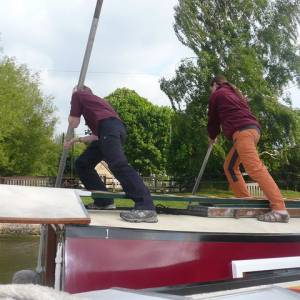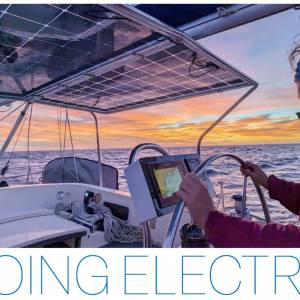
How to Self-Rescue When You Ground Yourself
It can happen to anyone, particularly on a windy day if you’re unfamiliar with the canal that you’re cruising on, and don’t know the shallow spots to watch out for. The canal is generally deepest in the middle of the channel except for at the bends and corners, which are deepest at the edges. An underwater hazard can include a silted up canal bed, shallower water due to recent low rain fall or dumped rubbish such as a bicycle or supermarket trolley.
If you find that you’ve run aground don’t try to force your way over the obstacle as you could find yourself even more stuck. As soon as you sense that the hull is scraping onto something below, put the engine into reverse and try to back away into deeper water. If you’re already stuck fast it may help to ask some or all of those onboard to move to the part of the boat that is still floating! But use yourdiscretion and common sense – you don’t want to make the boat list so much that it risks capsizing! You will then need the barge pole to push off against a solid object or the bottom of the canal. Keep the top of the pole away from your body and face in case it suddenly slips. Don’t put the pole straight down and try to use it as a lever, it may break, or it could cause you to fall in tothe canal. This can require some focus and concentration so remember to remain aware of what’s happening around you – on the boat, in the water and on the banks.
The times that I have run aground are when I have cruised too close to the soft-edge and don’t realise how shallow it can be. A soft-edge is the where the bank slopes down to the canal bed forming a gradual and often irregular margin at the water-level. These natural-looking edges are pleasing to the eye and attractive to wildlife. You’ll see them more commonly on the offside, whereas near-sides are more likely to have a hard-edge, creating an abruptstep making it easier to moor a boat.
Joanne Whistler is a mum living with her husband and children on a wide-beam canal boat. She says that when she ran aground, “My solution was to hitch a lift from a passing canoeist in order to reach the bank and let some water through the lock!”
Corinne and Neil Thomsett ran a pair of hotel boats for 7 years all over the UK waterways.
"We've not been grounded really, but we've been stuck in a few locks mind you! Though never on the on the Grand Union. We did once plan to stay in the first pound at Marsworth, but the water all ran out of the pound, so we had to let a lot of water down, (we were on one heck of a lean!) and get to the top of the flight in the dark after 10pm!"
Have you been in any tricky situations when boating? Let us know on
Facebook or Twitter.
Image credit: Corinne Thomsett, Virtual Assistant
You may also like:
Living on a Boat: The Boatshed Guide (free) / How to Sell a Boat: The Ultimate Guide (free eBook) / Howto Buy a Boat: The Ultimate Guide / The best blog articles of 2013 / Don’t miss:The Boatshed Grand Union Daily/ A slideshow of our boat of the moment. / More articles.
New here? Come and say 'hello' on Facebook or Twitter :-)
Never miss an article: Sign up and get the latest blog articles sent directly to you, plus instantly receive our free eBook: How to Sell a Boat: The Ultimate Guide.

